This laser system foreshadows a new era in ground-based astronomy
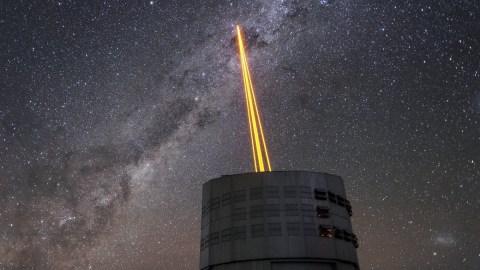
Think we’d never do better from the ground than from space? This adaptive optics system is proving this wrong!
“This event marks the culmination of many years of hard work on behalf of all involved.” –Jane Bachynski
Astronomy from the ground is rife with challenges. First, you need to build your telescope as massively large as possible at as high an altitude as possible. But that’s not all: you also need to make sure that there’s no significant light pollution for huge distances in all directions, including from the Moon, which doesn’t cooperate half the time irrespective of what you do. Then, each night you observe, you need to hope that there aren’t any clouds to obstruct your views of the Universe. And finally, even if you have clear, dark, moonless skies and an ideal location and equipment, there’s one combatant you’ll always have to contend with: the atmosphere itself.
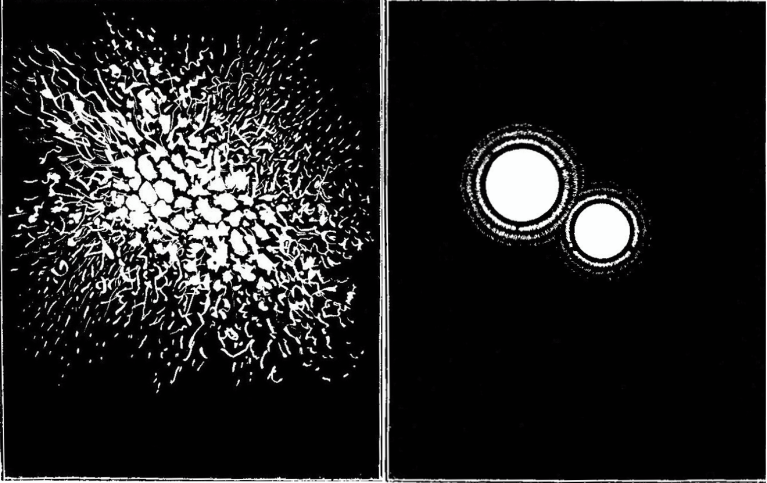
The warm air rises, the cool air sinks, the winds blow and the molecules move and jitter around constantly, forcing every observer to try and find ways to compensate for the trillions upon trillions of molecules interfering with every camera pixel attached to your telescope. Our atmosphere is a turbulent entity, with gases rising and falling, and swooping past rapidly, from any point of view, in stratified layers. It’s fair to say that the lowest layers are the densest and the most disruptive to our observations. That’s the reason telescopes are built at such high altitudes (and in locations with notoriously still air) in the first place: to reduce the amount of atmosphere one has to see through. For decades, the only hope of overcoming this was to launch a telescope to space, where it would rise above the atmosphere. But over the past few decades, a new method has emerged to help address this problem: the use of adaptive optics.
If you look out at an astronomical target and attempt to image it, the atmosphere will severely distort the light along its path from space until it reaches your telescope. But if you know the position and brightness properties of even a single object in the sky — such as a star — you can follow this procedure to compensate for the atmosphere incredibly well:
- Measure the incoming light from an entire field-of-view, including from the known (guide) star.
- Make a copy of the light exactly as it is as it’s incoming, delaying its arrival at the final destination.
- Compute what distorted shape you’d have to make your mirror to un-distort the light from the guide star back to its original, point-like shape.
- Then create that mirror, and reflect all of the delayed, incoming light off of it.
- Finally, you can observe the object in question.
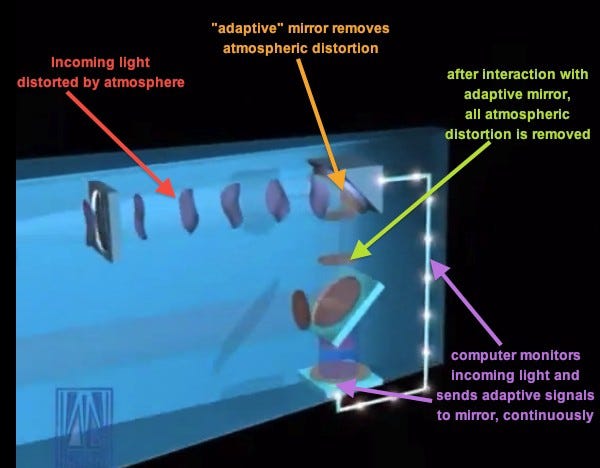
The reason this is known as adaptive optics is because this isn’t a one-time adaptation, but rather a continuous process, where the mirror is constantly adapting to the chaotic changes in the atmospheric distortion. We even have developed a spectacular system for adapting to the atmosphere where no bright guide star is present: the creation of an artificial star through the use of sodium lasers.
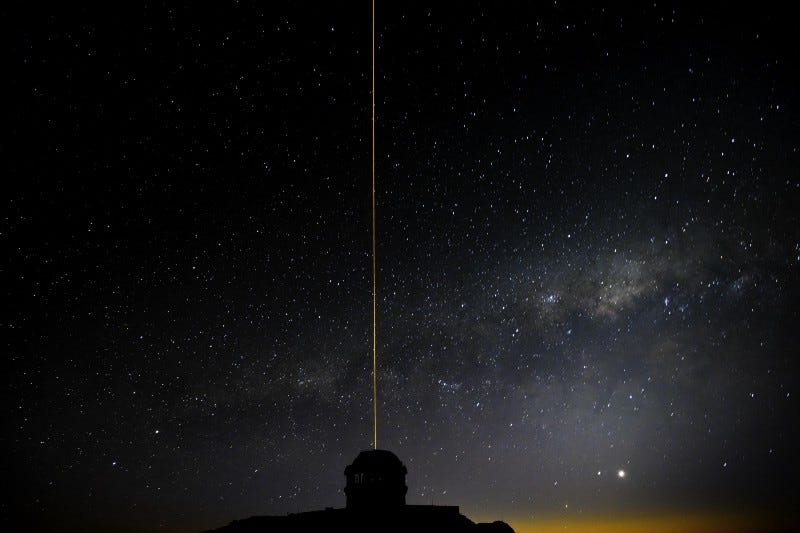
The fact that our atmosphere is layered is crucial to the success of this method. Certain elements are segregated from the others, and are found only at very particular altitudes. One of the elements that’s very rare is sodium, which happens to be concentrated in a thin layer about 100 km (60 miles) up. If you fire a sodium laser into the air, it will excite those sodium atoms found at that particular altitude, which then spontaneously de-excite, creating an artificial light source to be used as an artificial guide star.
While 100 kilometers isn’t exactly above 100% of the atmosphere, it removes upwards of 99% of the distortion, enabling us to compete with space-based telescopes in terms of seeing quality, but with telescopes that have tens (or, in the near future, with potentially hundreds) of times the light-gathering power!
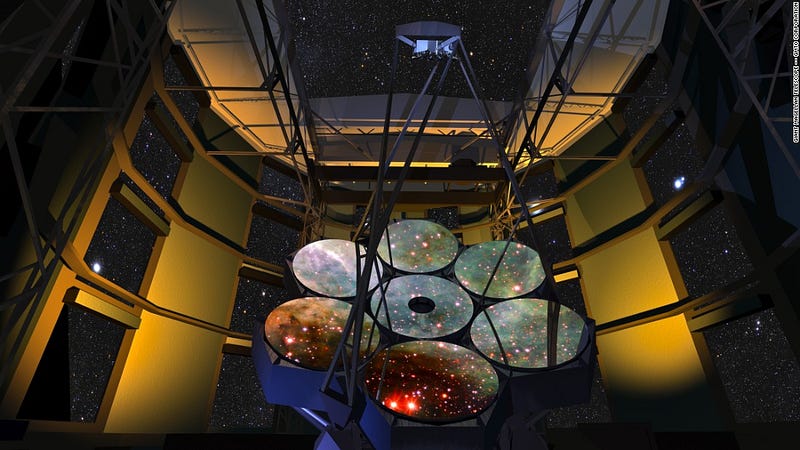
In 2012, for the first time, we used the then-most-advanced adaptive optics technology in the world, attached to the Gemini Observatory, to outperform the Hubble Space Telescope in a side-by-side comparison. See for yourself by comparing the image below — taken from a ground-based 8.19-meter telescope outfitted with cutting-edge adaptive optics on the left — with the 2.4-meter Hubble Space Telescope (on the right) which is in space! See if you can’t identify , side-by-side, a number of instances where Gemini uncovered stars that Hubble missed.
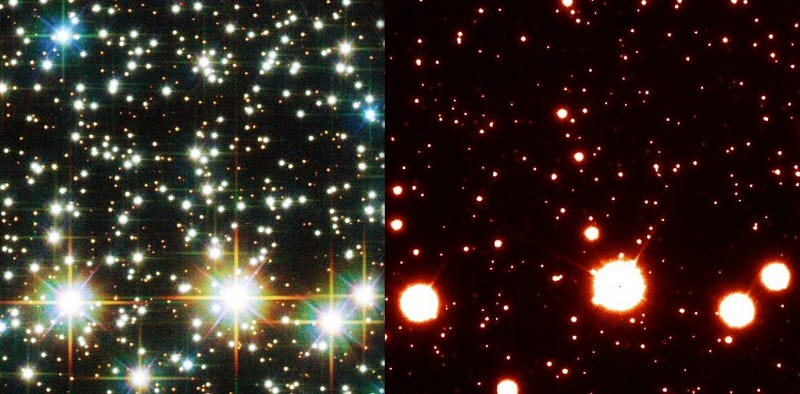
Despite its tremendous successes, adaptive optics still has plenty of room for improvement. Until we’re building ground-based telescopes on the Moon or have a working space elevator, this is likely to be a huge area of improvement over the coming years. Thankfully, we just saw Paranal Observatory, a partner of the European Southern Observatory (ESO), incorporate the most advanced new improvement ever in the field of adaptive optics: the 4 Laser Guide Star Facility (4LGSF).
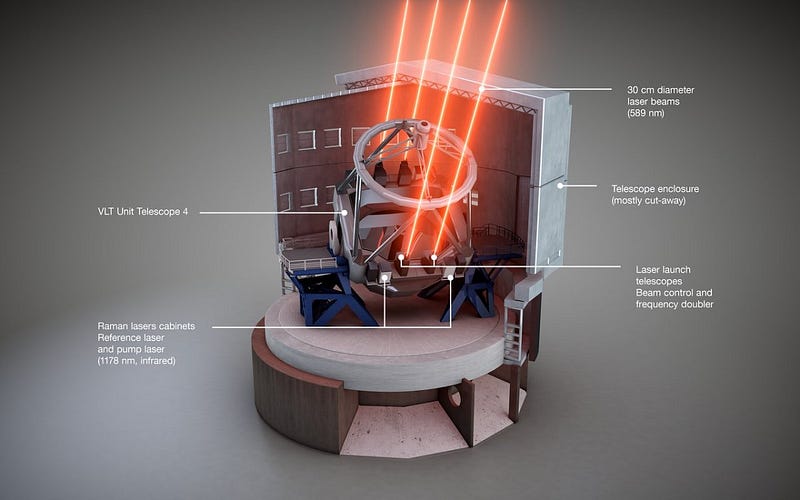
By creating four guide stars instead of one, astronomers can better adapt to the entire field-of-view of the image. The artificial stars can be moved around the sky independently both of one another and of the telescope, enabling the adaptive techniques used to be optimized for each image independently. This is a huge new potential success for telescope technology, and it promises to improve ground-based telescope images across the field-of-view substantially. As the ESO themselves state in their press release:
Using more than one laser allows the turbulence in the atmosphere to be mapped in far greater detail to significantly improve the image quality over a larger field of view.
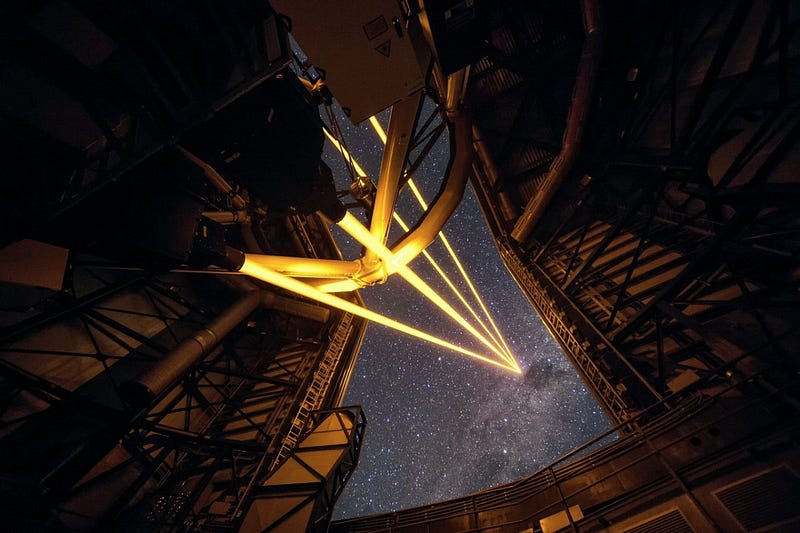
This is not only a tremendous boon to astronomy, but a tremendous successful collaboration between government-funded endeavors and private industry, without whom this improvement would have been impossible. With 25-to-39 meter class telescopes scheduled to come online in the coming decade, including the E-ELT at 39 meters and also managed by ESO, it’s never been a better time to be an astronomer. (It’s also great news to fans of the infamous quad laser.) It’s time to seriously consider that telescopes outfitted with adaptive optics may be able to surpass space-based telescopes as far as quality imaging per dollar goes once and for all!
This post first appeared at Forbes. Leave your comments on our forum, check out our first book: Beyond The Galaxy, and support our Patreon campaign!





